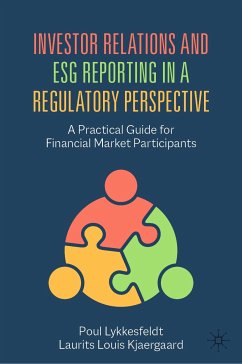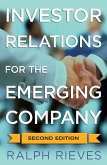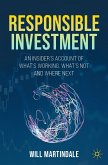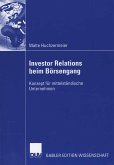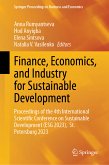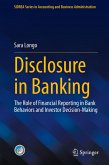Investor Relations and ESG Reporting in a Regulatory Perspective is a comprehensive and detailed practical guide for financial market participants, focusing on the stock market, written for practitioners by practitioners. The main themes of the book include the challenging integration of investor relations (IR) and the non-financial reporting of environmental, social and governance (ESG). Further, the book provides a comprehensive overview of the complex regulatory framework of the European Union (EU) related to the financial markets, including the expected global trends in this area.
Extracted Praise from Testimonials - Full Endorsements Featured in Frontmatter
"..... This book provides an excellent and competent overview of the challenges that senior management and boards are facing today relating to new ESG reporting requirements ..... I offer this book my highest recommendations as relevant and newsworthy reading regarding companies' and institutions' continued journey in pursuing the ESG agenda and meeting the increasing demands of investors regarding high-quality ESG reporting."
-Lise Kingo, Independent Board Director in Sanofi SA, Covestro AG and Aker Horizons ASA; Former CEO and Executive Director of the United Nations Global Compact; and prior to this, Executive Vice President and member of Novo Nordisk's Executive Management
"I doubt that a more insightful and practically-oriented handbook has been written, or may be written over the next decade, on the subject of investor relations, not only providing an essential overview but also illustrating how IR is executed in a best practice manner. This book integrates IR and ESG reporting, which is essential for global investors today ....."
-Carsten Borring, Associated Vice President Global Listing, Nasdaq; Member of The Federation of European Securities Exchanges (FESE) Listing Expert Group; Former board member of the Danish Centre for ESG Research and the Danish Government's Panel for Entrepreneurs
" ..... I take pleasure recommending this book to any stakeholder with an interest in the EU regulatory framework related to the financial and capital markets, including to companies and investors outside the EU who wish a competent EU regulatory overview."
- David Moalem, Partner, Ph.D., Bech-Bruun law firm, Capital Markets & Financial Institutions Team; Former Partner and National Head of Legal Services at Deloitte
"The authors provide unique and incredibly insightful practical information and recommendations for IROs and Executive Management teams in listed companies regarding organising and executing best practice IR. The combination of simple and straightforward information, and its many layers of solid theoretical understanding and real-life examples, makes this book invaluable for both the experienced and the newly started IRO ...... This book is, in every manner, highly recommended."
-Michael Bjergby, Senior Vice President, Head of Group Finance, ISS A/S; Former Head of Investor Relations at ISS, Pandora and GN Group
Dieser Download kann aus rechtlichen Gründen nur mit Rechnungsadresse in A, B, BG, CY, CZ, D, DK, EW, E, FIN, F, GR, HR, H, IRL, I, LT, L, LR, M, NL, PL, P, R, S, SLO, SK ausgeliefert werden.
Hinweis: Dieser Artikel kann nur an eine deutsche Lieferadresse ausgeliefert werden.
Es gelten unsere Allgemeinen Geschäftsbedingungen: www.buecher.de/agb
Impressum
www.buecher.de ist ein Internetauftritt der buecher.de internetstores GmbH
Geschäftsführung: Monica Sawhney | Roland Kölbl | Günter Hilger
Sitz der Gesellschaft: Batheyer Straße 115 - 117, 58099 Hagen
Postanschrift: Bürgermeister-Wegele-Str. 12, 86167 Augsburg
Amtsgericht Hagen HRB 13257
Steuernummer: 321/5800/1497
USt-IdNr: DE450055826
Bitte wählen Sie Ihr Anliegen aus.
Rechnungen
Retourenschein anfordern
Bestellstatus
Storno

